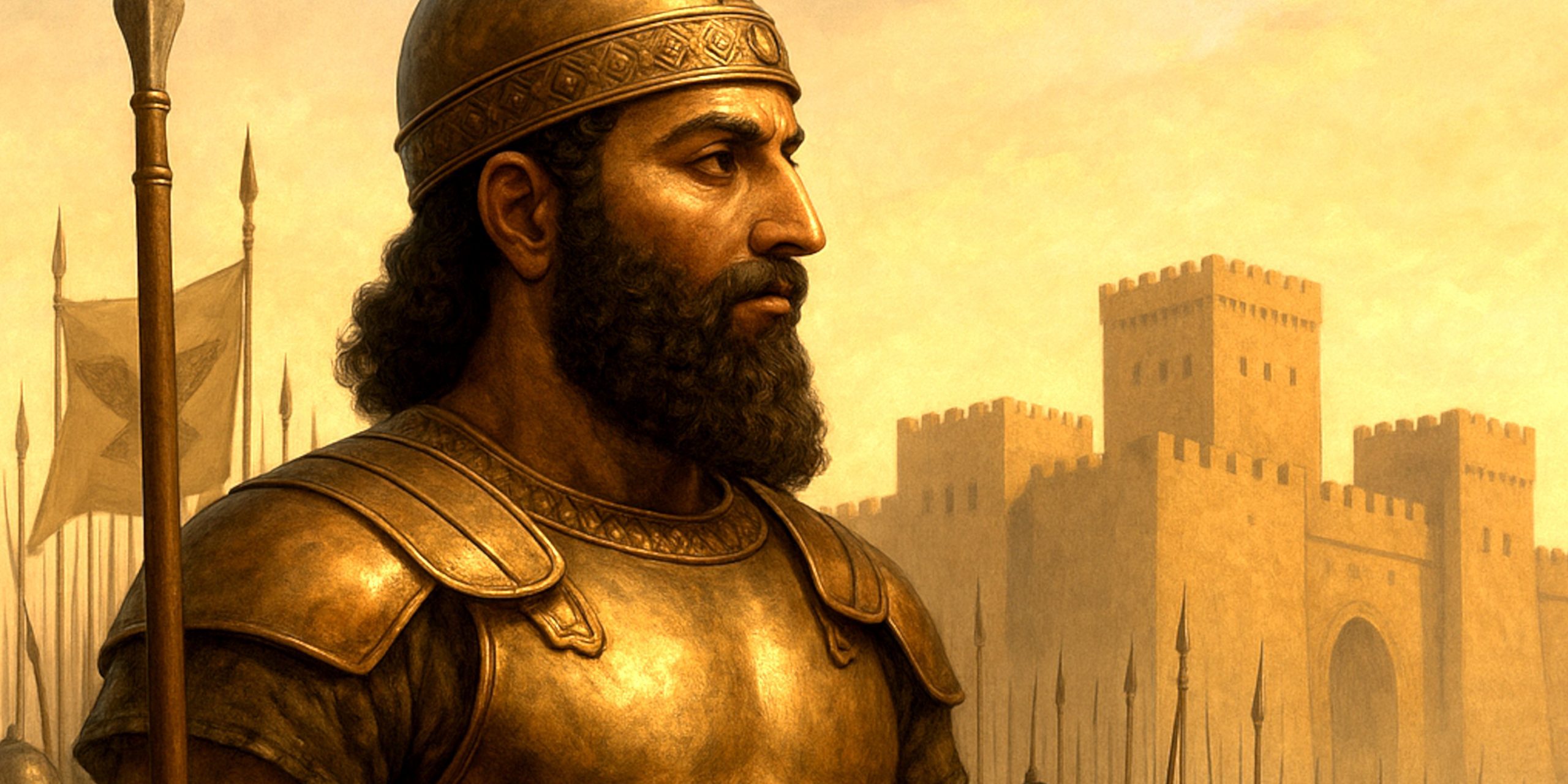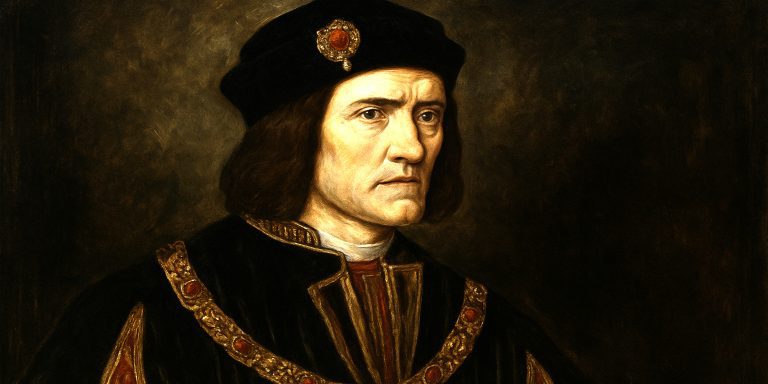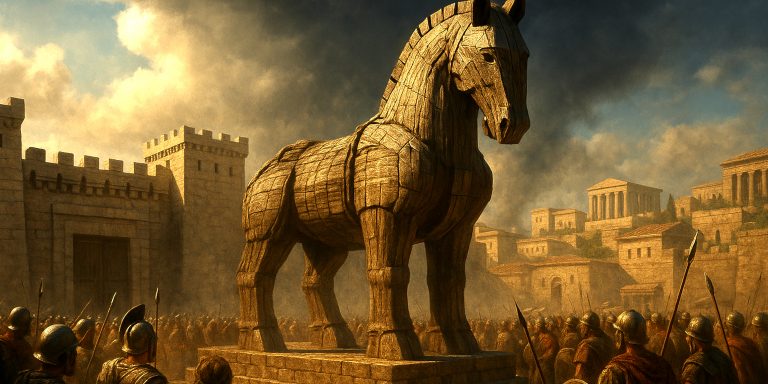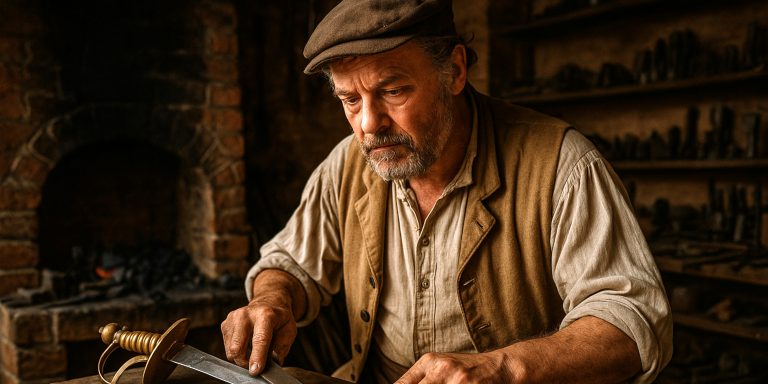
Few figures in ancient history loom larger than Sargon of Akkad, the man who carved out what is often called the world’s first empire. He ruled Mesopotamia over four thousand years ago, uniting Sumerian city-states under one banner and setting the blueprint for kingship and conquest that countless rulers would later imitate. What makes Sargon so fascinating is not just his conquests but the sheer audacity of his rise: from a cupbearer to a king, from obscurity to near-godlike reverence.
There are gaps in the record, of course. Much of what we know is pieced together from inscriptions, legends and later chronicles. Yet through these fragments, Sargon emerges as both ruthless conqueror and visionary administrator, blending warfare, politics and myth in a way that changed civilisation itself.
Origins and Rise
Sargon (Sharru-kin, meaning “the true king”) is said to have begun life as a servant to Ur-Zababa, the king of Kish. Legend claims his mother was a priestess and that he was set adrift in a basket on the Euphrates as a baby, foreshadowing later Biblical tales. Whatever the truth, Sargon rose from obscurity with rare political instinct, seizing Kish and then pressing south into the Sumerian heartland.
By around 2334 BC, he had subdued the major Sumerian cities: Ur, Uruk, Lagash and Umma. His capital, Akkad (or Agade), has never been conclusively located, though most archaeologists believe it lay near modern Baghdad.
Arms and Armour
Sargon’s military power rested on discipline and innovation. The armies of Akkad were among the first standing professional forces rather than temporary levies. They were armed with bronze weapons, and there is growing evidence that the Akkadians refined the composite bow, giving them superior range and penetration.
| Weapon/Armour | Description | Notes |
|---|---|---|
| Bronze spear | Main weapon for infantry formations | Often socketed with leaf-shaped blades |
| Composite bow | Made from wood, horn, and sinew | Increased range compared to Sumerian bows |
| Copper or bronze axe | Used by elite guards and officers | Double-headed ceremonial versions also existed |
| Helmet (copper alloy) | Conical, sometimes with a crest | Similar to the famous bronze head of an Akkadian ruler |
| Cuirass or leather corselet | Rare among lower ranks | Officers may have used layered linen or metal scales |
Typical Akkadian military gear included:
Akkadian soldiers fought in tight formations, often with rectangular shields and short swords for close combat. Chariots of the period were heavy and four-wheeled, drawn by onagers rather than horses, yet they provided an early form of shock warfare.
As a historian, I’m always struck by how organised Sargon’s army seems compared to earlier Sumerian militias. His empire’s survival depended not just on conquest but on logistics: supply chains, road systems, and garrisons stretching from the Persian Gulf to the Mediterranean. It was war as administration.
Battles and Military Acumen
Sargon’s campaigns transformed Mesopotamia from a collection of rival city-states into a centralised empire. His greatest victories include the defeat of Lugalzagesi of Uruk, his main Sumerian rival, and a series of campaigns that extended into Elam (Iran), Mari (Syria), and possibly as far as Anatolia.
He claimed to have “washed his weapons in the sea,” meaning he reached both the Persian Gulf and the Mediterranean. Whether literally or symbolically, the phrase shows how he understood the power of spectacle in kingship.
His military acumen lay not only in battlefield victories but in control through appointed governors, fortified cities, and strategic deportations. The Akkadian army crushed rebellions efficiently, even as it expanded too fast for its own infrastructure.
Later legends portray Sargon as tireless and almost supernatural in endurance, leading men on campaign for years without rest. As with Alexander or Napoleon, his genius was as much psychological as strategic.
Administration and Legacy
Sargon standardised weights, measures and taxation, spreading the Akkadian language as the lingua franca of power. This cultural unification became one of his most lasting achievements, influencing later Assyrian and Babylonian states.
His dynasty lasted about a century before collapsing under external invasion and internal revolt, but by then the model of empire was set: a divine ruler commanding a bureaucratic machine. In many ways, every king who came after was performing a version of Sargon’s role.
Archaeology and Artifacts
The frustrating truth is that the city of Akkad itself remains undiscovered. Archaeologists have searched for decades along the Tigris and Euphrates but have yet to find its ruins. However, numerous artefacts and inscriptions survive from his reign and his successors, offering tantalising glimpses into the Akkadian world.
Where to see relics from Sargon’s era:
| Location | Artefact | Description |
|---|---|---|
| Iraq Museum (Baghdad) | The Bronze Head of an Akkadian Ruler (possibly Sargon or Naram-Sin) | Exquisite bronze casting with inlaid eyes once thought to represent Sargon himself |
| Louvre (Paris) | Akkadian stela fragments | Depict royal victory scenes with early examples of narrative relief |
| British Museum (London) | Cuneiform tablets and administrative seals | Evidence of Akkadian bureaucracy and the reach of imperial control |
| Penn Museum (Philadelphia) | Clay tablets from Tell Brak | Record trade and taxation under Akkadian rule |
Recent excavations in Tell Leilan and Tell Brak (modern Syria) show Akkadian fortifications and archives, confirming the empire’s northern reach. Environmental studies even suggest that climate change and drought hastened its fall around 2200 BC, a strikingly modern echo of overreach and environmental collapse.
Personal Reflections
What fascinates me most about Sargon is the tension between myth and machinery. On one hand, he’s the foundling child lifted by the gods, a figure of destiny. On the other, he’s a shrewd political operator who created systems, bureaucracy, military logistics, propaganda, that endured long after his name faded into legend.
In the fragments of cuneiform that survive, we glimpse something recognisably human: ambition, fear, control, and legacy. Sargon was not just the first conqueror; he was the first to grasp that empire must be managed, not merely won. That understanding, as cold as it sounds, is what made him immortal.
Watch the documentary:



